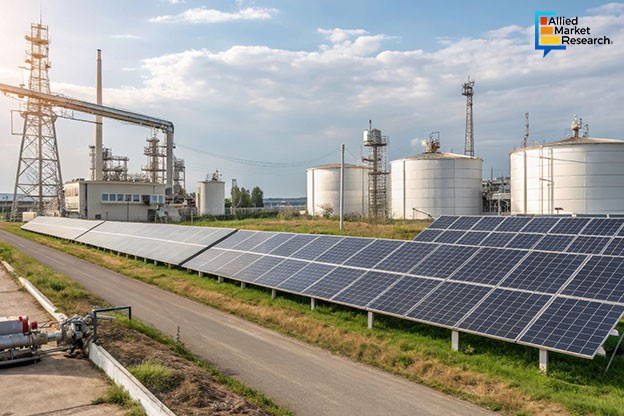AI in Biomass Power Generation: Maximizing Energy Output through Resource Optimization

29 Apr
2025
Key takeaways:
- Introduction
- Role of AI in the industry
- Important product launches in the sector
Biomass refers to organic matter derived from living things, which can be used as a source of renewable energy. Biomass can be directly burned to generate power or can be converted to liquid (biofuels) or gas (biogas) through different conversion processes. Over the years, it has become one of the most popular transportation fuels and is used for cooking and heating in several developing countries. Wood processing waste and residue, agricultural crops, biogenic materials, animal manure, and human sewage are some common biomass sources used for power generation.
Latest advancements in renewable energy production impacting the sector positively
Over the years, the focus on biomass power generation has increased due to the rising awareness regarding the importance of environmental sustainability. As part of the Paris Agreement in 2015 and subsequent multinational climate deals, many governments have declared their net-zero goals as part of a larger strategy to curb global warming and climate change. To achieve these targets, countries have enacted laws to facilitate a transition of manufacturing, transportation, and other such carbon-emitting industries toward clean fuels. This has led to a surge in the adoption of biomass power generation techniques, thereby creating favorable conditions for the growth of the sector.
The use of Artificial Intelligence to maximize power output is another important trend witnessed in the industry. AI-powered tools have become an essential component of energy generation as they aid in analyzing information regarding potential biomass sites based on parameters like moisture content, temperature, flora and fauna diversity, etc. Apart from providing insights into feedstock quality and quantity, AI enables companies to automatically adjust combustion processes to ensure resource optimization and reduce waste. For instance, these tools enable companies to establish different energy production frameworks for all stages of biomass power generation from pre-treatment to distribution, thus increasing the efficiency of the entire supply chain. The use of IoT devices and sensors assists operators in monitoring these processes in real-time, enhancing their overall accuracy and precision.
Increasing investments in biomass power generation boosting the sector’s revenue share
The biomass power generation industry accounted for $91.3 billion in 2023 and is anticipated to gather a revenue of $124.5 billion by 2033, rising at a CAGR of 3.2% during 2024-2033. In the last few years, several major companies have invested in R&D projects and established new biomass power generation facilities to increase their footprint in the industry. In October 2024, BioVeritas, LLC, a sustainable fuels and chemicals company, announced the launch of biomass-into-SAF technology. This new system converts biomass into volatile fatty acids (VFAs) via fermentation processes, which are then processed to produce sustainable aviation fuels. The press release issued by the company highlighted that the three main processes used by this novel solution include Directed Mixed-Culture Fermentation, Low-Energy Acid Recovery, and VFA-SAF conversion.
On the other hand, in October 2024, Mitsubishi Power, a multinational power company, released a press statement to announce the completion of construction of a 500MW woody biomass-fired power plant. Situated in Miyazaki, Japan, the facility features a steam turbine, generator, circulating fluidized bed (CFB) boiler, and other equipment to enhance energy production. The main aim of establishing this industrial facility is to maximize biomass power generation through local community support.
To conclude, rising awareness regarding ecological conservation and the environmental hazards associated with global warming has led to an increase in the popularity of biomass power generation systems. The use of Artificial Intelligence to increase the efficiency and productivity of energy production equipment is expected to play an important role in the growth of the industry in the coming period.
Get in touch with our experts for more information on the evolving dynamics of the biomass power generation market!

Akhilesh Prabhugaonkar
Author's Bio- Akhilesh Prabhugaonkar holds a bachelor’s degree in Electronics Engineering from the reputed Vishwakarma Institute of Technology. He has a special interest in the fields of forensics, world history, international relations and foreign policy, sports, agriculture, astronomy, security, and oceanography. An ardent bibliophile and melophile, Akhilesh loves to write on topics of his interest and various other societal issues. This love for writing made him enter the professional world of content writing and pursue his career in this direction.
Avenue: Entire Library membership of Allied Market Research Reports at your disposal
- Avenue is an innovative subscription-based online report database.
- Avail an online access to the entire library of syndicated reports on more than 2,000 niche industries and company profiles on more than 12,000 firms across 11 domains.
- A cost-effective model tailored for entrepreneurs, investors, and students & researchers at universities.
- Request customizations, suggest new reports, and avail analyst support as per your requirements.
- Get an access to the library of reports at any time from any device and anywhere.
Related Post
-
How are Submarine Cables Transforming Global Connectivity with Enhanced User Experience?
-
Endoscopy Procedures: Transformations in Techniques and Applications
-
AI-Powered Video Analytics: How the Product Actually Works for enterprises
-
Painting Robots: Transforming Precision Coating and Creative Applications
-
Innovations in Pharmacovigilance Systems Advancing Patient Safety
-
Understanding Edge Security: Keeping Data Safe Near the Source
-
Exploring the Use and Advancements of 3D Laser Scanners in Professional Applications
-
Reinforcing Industrial Controls with Smarter Tools and Training








